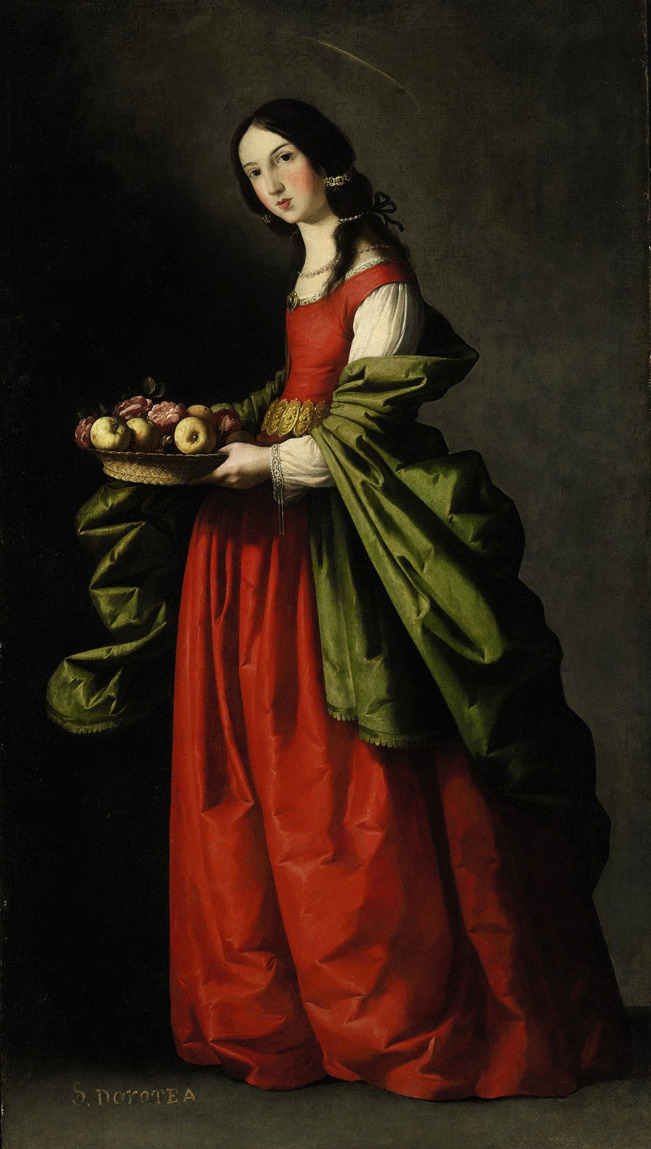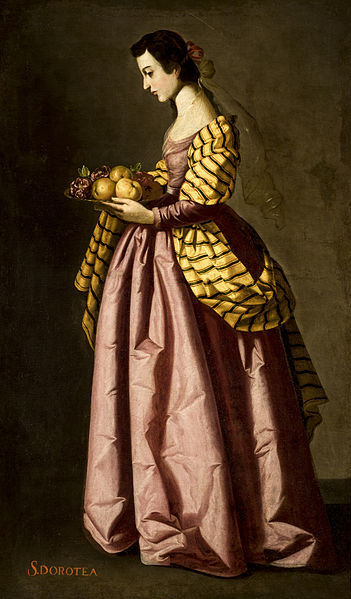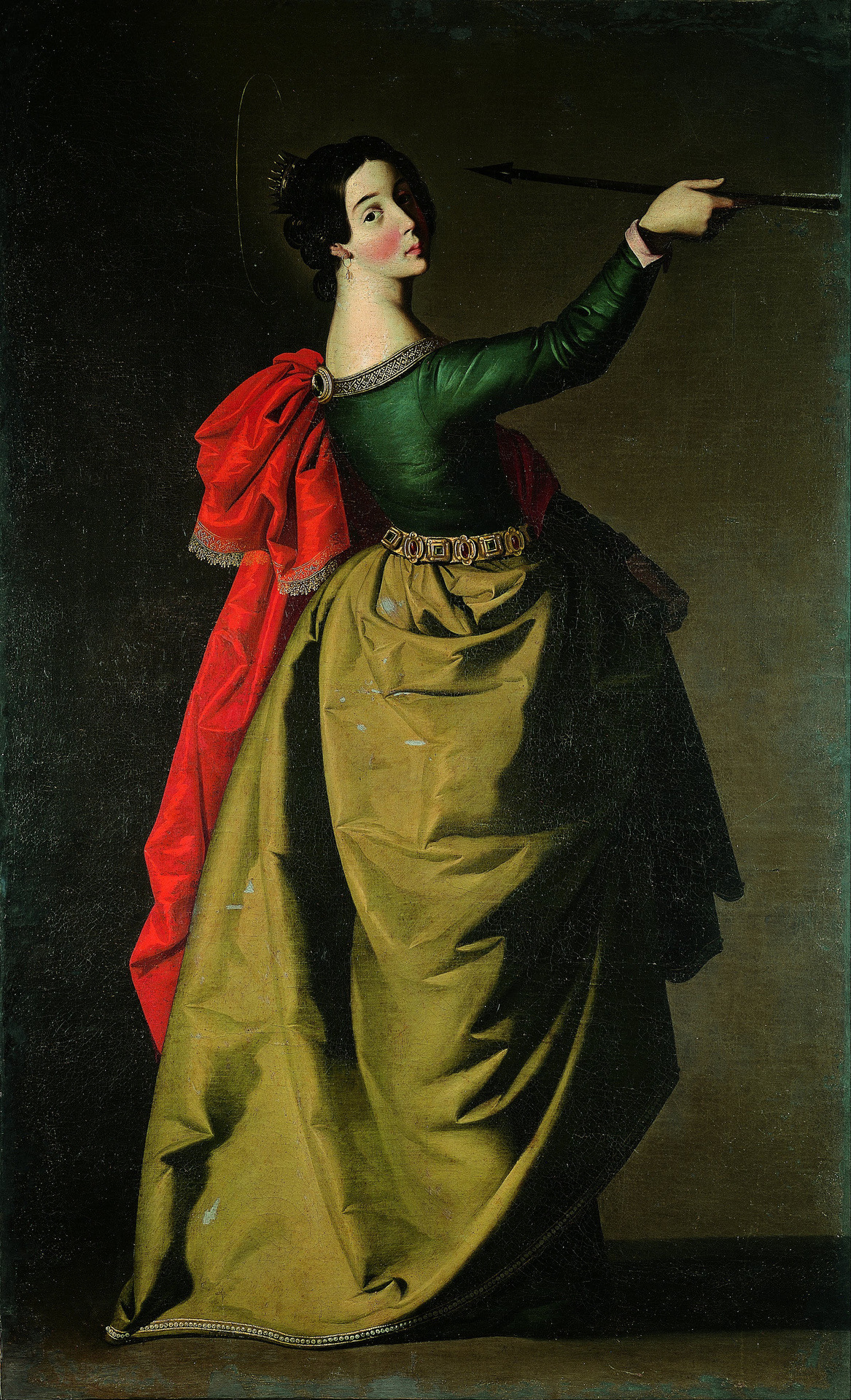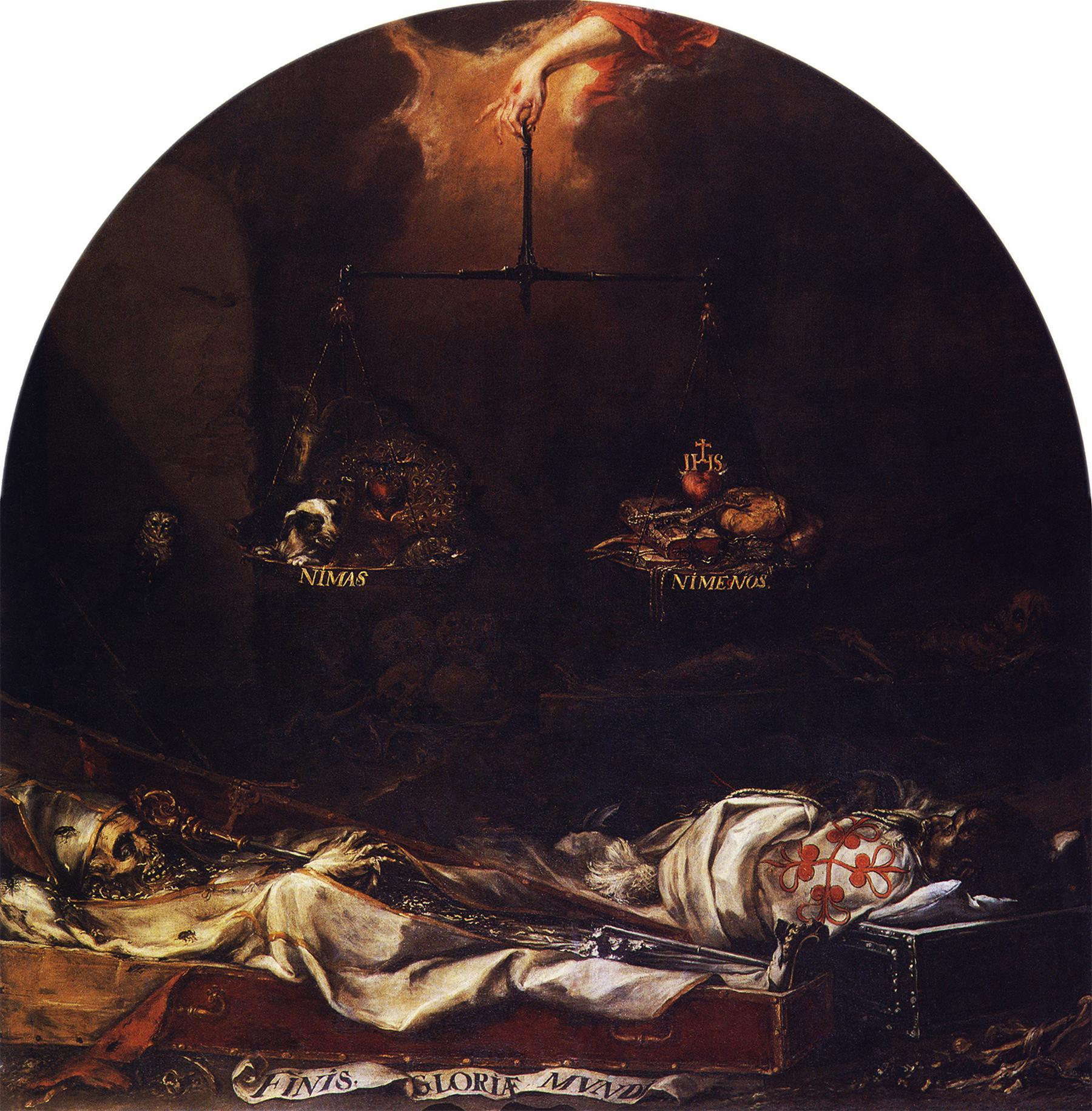In this post we’ll take a look at some pretty women dressed in splendid white gowns by a Dutch Baroque painter Gerard ter Borch.
 Gerard ter Borch, Woman Reading a Letter, 1660-62
Gerard ter Borch, Woman Reading a Letter, 1660-62
Out of the darkness that lures in the background, a genre scene full of intrigues and turmoil arises. A table, two chairs and three figures hold a story. A pretty young lady is reading a letter, most likely a love letter. Her raised eyebrows and slightly parted pink lips reveal her thoughts and feelings; she’s surprised, confused, a bit saddened by the words of the letter. An older female figure dressed in a fur-lined dress is sitting at the table, above an unfinished letter, she’s resting her head on one hand, and holding a quill in the other. Her gaze tells us about the seriousness of the situation. Even the young long haired servant boy glances at her worryingly! Meanwhile, a little dog is sleeping on the other chair.
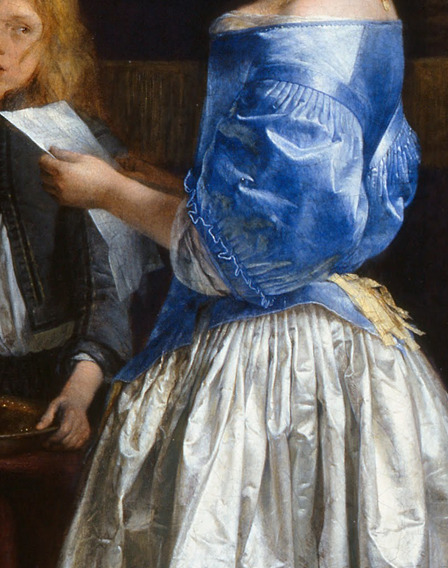
Let us take a moment to appreciate her gorgeous satin gown. It is painted so beautifully and so skilfully that it looks, to me, as if it was a ball gown woven from moonlight and dandelion seeds for a forest fairy and by some magical mistake it ended up in the wardrobe of a seventeenth century lady. By painting the dress so shining and white, Ter Borch not only emphasised the rich status of the lady wearing it, and showed the elegance and sophistication of the latest fashions, but he also used it as a dazzling contrast of light and darkness. The background and the other figures are painted in dark sombre tones, and the spotlight is on her, the lady reading a letter whose words and emotions will remain forever mysterious to us. In that splendid whiteness the woman looks like a fragrant white lily blooming in the darkness of her beautiful cage.

Gerard ter Borch, Lady at her Toilette, 1660
In “Lady at the Toilette”, we have a somewhat similar scene. Again a woman dressed in a gorgeous white satin gown with details in gold and blue takes the central position. Our eyes are on her, but where is she looking? Both her clothes and the interior signify her high status, and are surely more sophisticated than Vermeer’s are. The interior with a fireplace, Oriental carpet, a mirror, and candlesticks shows luxury. The mirror shows the woman’s profile, but it doesn’t quite make sense. A figure behind the woman is perhaps a maid helping her with her gown, or a seamstress taking a measure or putting finishing touches to the dress. There is a richly dressed servant boy again. A little dog is present as well, not sleeping this time, but stretching with curiosity on the chair.
Ter Borch always lets the long skirt touch the floor and stay there in movement, creating shadows and depths, and you can almost hear its rustle, imagine its softness and shine. With his emphasis on elegance and splendour, Ter Borch partly announced the art of the eighteenth century.

Gerard ter Borch, Woman Writing a Letter, 1655
And now a lady not reading a letter but writing one. Take a look at her pearl earring, and look how concentrated she looks, as if she doesn’t know we are gazing at her. And what is she writing, I am bursting with curiosity to find out!
These days, Jan Vermeer is perhaps the most well-known out of the genre-scene painters from the Dutch Golden Age of painting but Gerard ter Borch has painted his fair share of everyday people in everyday situations and he went even further than Vermeer and Jan Steen by adding the glamour and stylishness to everyday life; he transformed middle class ladies into belles of the ball. There is a simple reason why genre painting flourished in the Dutch Republic in the seventeenth century: there was a free art market and painters weren’t restricted by the demands of the church as they were in the neighbouring Flanders or Southern Netherlands, then controlled by Spain. The artists naturally shifted their focus from the pompous religious subjects full of pathos and flair, which dominated the Spanish and Flemish Baroque, to humble beauties of everyday life. Genre-scenes were a popular option, but still lives and landscapes were common too. This shift seems all to natural to me, for, if a king or a court lady deserves to have her portrait painted, if she is worthy of being captured on canvas for eternity, why wouldn’t a middle-class lady from Utrecht or Amsterdam be a worthy subject for a painting?

Gerrit ter Borch, Messenger, 1650
Painting “The Messanger” is very interesting because the mood of mystery that lingers throughout Ter Borch’s paintings reaches its peak here. A lady in a shining white satin is reading a letter brought by a messenger merely a moment ago. But she turned her back on us, so not only are the words of a love letter concealed from us, so is her face expression. Is she smiling sweetly and trying to prevent herself from giggling, or is she standing in that dark room with a furrowed brow, trying to prevent tears from obscuring her vision, in case the messenger had brought sad news and is waiting for a quick reply. We will never know.
In all these paintings, Ter Borch presents us with a gentler, more intimate, softer side of Baroque; a world of silence and stillness, eloquent glances and glistening fabrics, letters being written and letters being read, letters full of secrets; a world we can relate to and which intrigues us. Jan Vermeer’s genre scenes have a similar mood, and the emphasis is, in both artists, on intimacy and silent drama that takes place behind closed doors.

Gerard ter Borch, An Officer Making His Bow to a Courtesan, 1660s
I decided to add the painting you see above just because of the ethereally beautiful white fabric. It looks so light and airy as it touches the floor. Also, I recently wrote a short post about Victorian photography where girls are dressed in splendid gowns and reside in chambers of silences and dreams, and looking at Gerard ter Borch’s paintings now reminds me of those photographs.
Also, I already wrote about Jan Vermeer’s similar genre scenes here.
Tags: 1650s, 1660s, 17th Century, art, Baroque, Borch, Dutch Art, elegance, fabric, genre scene, Gerard ter Borch, interior, lady, Lady at her toilette, letter, love, love letter, Painting, romance, satin gown, secrets, silence, silk, white dress, Woman reading a letter
 Paul Gauguin, Spirit of the Dead Watching, 1892
Paul Gauguin, Spirit of the Dead Watching, 1892



